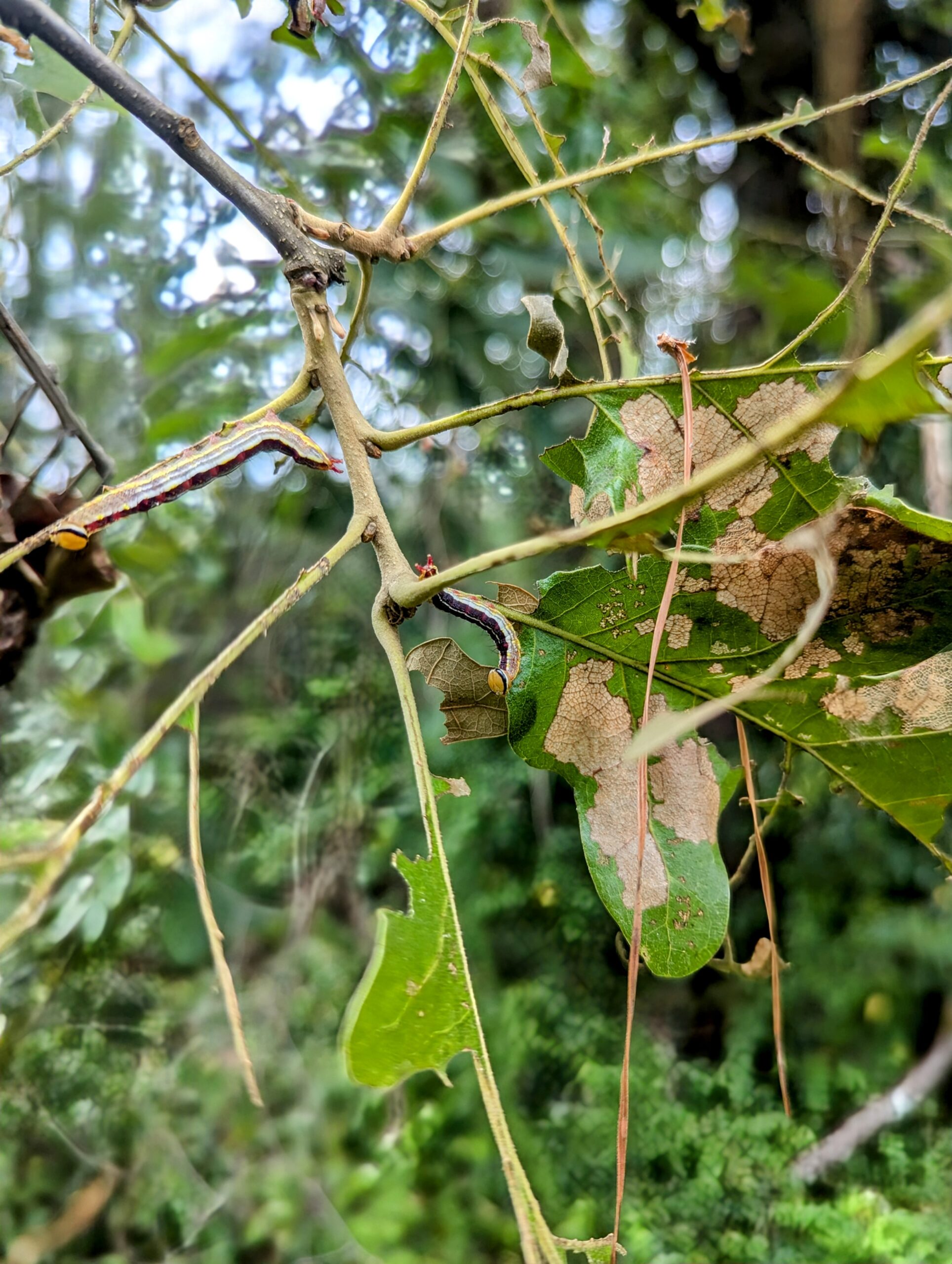Outbreak of Variable Oak Leaf Caterpillar and Hypoxylon Canker Threatens Central Mississippi Oaks

A significant outbreak of variable oak leaf caterpillar, coupled with the presence of hypoxylon canker, which is a fungus that negatively affects growth and can eventually lead to the death of weak or diseased host trees, has been reported in several cities in or near Central Mississippi, including the Flora, Pocahantas, and Raymond areas. This dual threat poses a serious risk to the health of oak and other hardwood trees. Russell Bozeman, MFC State Forester, declares, “We are aware of the caterpillar damage in and around the Raymond area. We are conducting aerial and ground checks to determine the extent of the damage. Landowners should continue to monitor their forest for insect damage and activity.”
The variable oak leaf caterpillar and the fungus that causes hypoxylon canker are native species that don’t cause significant damage to healthy trees in normal years. However, these pests are believed to be exploiting the drought stress that many trees experienced last year. The added defoliation caused by the caterpillars could further weaken the trees, making them more susceptible to other pests and diseases, including the often-fatal hypoxylon canker.
“The combination of these two factors is a major concern for the health of our oak trees,” said Dr. John J. Riggins, Professor of Forest Health at Mississippi State University and Forest Entomologist for the Mississippi Forestry Commission. “We urge residents to monitor their trees closely and take steps to mitigate the damage by promoting tree vigor by whatever means possible.”
During outbreaks, the variable oak leaf caterpillar can significantly defoliate oak trees. Although the caterpillar’s coloring is “variable,” at maturity, it is typically green or brown, with a greenish head and distinctive lighter-colored stripe running down its back. It feeds on the leaves of oak trees, especially white oaks, though all oaks and many other deciduous trees can be hosts.

Hypoxylon canker typically attacks stressed or weakened trees, particularly after droughts. The fungus causes cankers, or sunken areas, to form on the bark of the tree, where the bark eventually falls off and is replaced by tan-to-black patches leathery of fungus. These cankers can eventually girdle the tree, cutting off the flow of nutrients and water and killing the tree.
Residents are encouraged to contact their local Mississippi Forestry Commission specialist or an ISA-certified arborist for more information on how to protect their oak trees.
For further information on Variable Oak Leaf Caterpillars and Hypoxylon Canker, click the following links:
